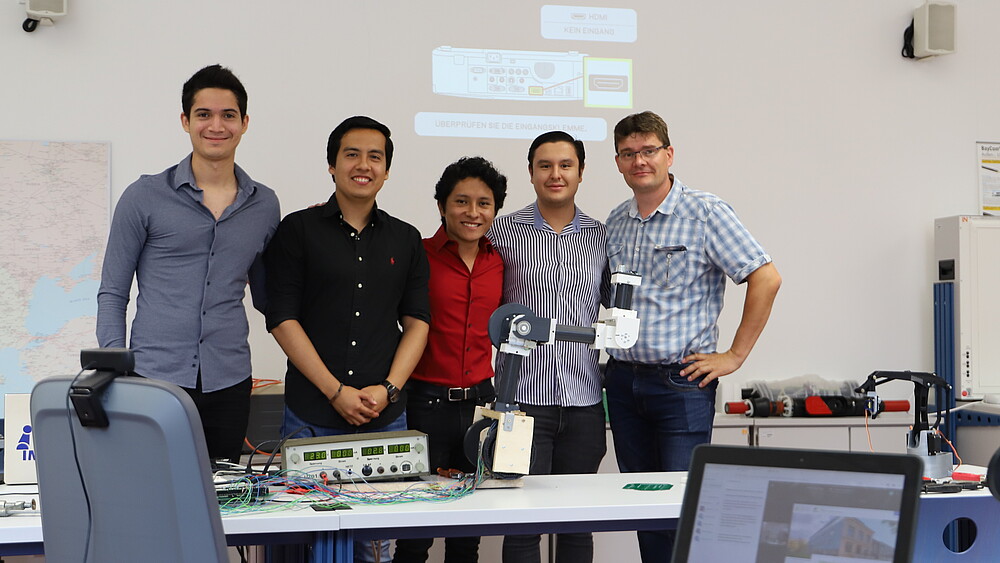Mexican students present a robotic arm they developed themselves as part of a mechatronics project.

As part of the "Mechatronics Project Work" module in the bachelor's degree program in automation and mechatronics, exchange students from Mexico have developed a 6-axis robotic arm. What can it do? The students presented this in their public final defense on July 23.
Interested parties were able to find out online in the BigBlueButton room during the presentation what challenges Daniel Ocampo Mendoza, Marco Barrera Salas, Hamid Castillo Martinez and Roberto Hernandez Tovar had to face during the development.
"The students faced major challenges. Starting practically from scratch, without materials and advanced knowledge, e.g. in additive manufacturing and special programming languages, and then finally producing a finished and functional robot arm. That is remarkable and worthy of recognition", says Egmont Schreiter.
”The Diplom engineer accompanied the Mexican students during their project work.
The aim of the project was for the students to build a 6-axis robot arm from scratch as a demonstration example. The following main tasks were defined:
In their presentation, the students had the robot arm perform various movement sequences using the specially programmed interface. What looks like a conventional movement - such as fully extending the robot arm - presented the Mexicans with major challenges. "During the pandemic, I wasn't able to visit a laboratory in Mexico, but here in Germany we have worked intensively with different programming languages and learned a lot," reports Roberto Hernández. "Ultimately, we are delighted that we were able to construct a functioning robotic arm through a lot of calculations."
Marco Barrera Salas is also happy about this and points out various areas for improvement that future students can continue to work on. "We are convinced that our project can be continued," says the programmer.
Where do the students see their robotic arm in the future? "A lot is possible," summarizes Marco. At the moment, the arm can transport small objects, so he sees its future use primarily in laboratories, e.g. when replacing pieces of metal.
"Studying at the HSZG is not just about theory, but also a lot of practice. That's why the robotic arm is intended to show our prospective students what practical content is taught during their studies." says Egmont Schreiter of the student project.
”The project supervisor also emphasizes the added value of such developments in the field of mechatronics for companies. "As the developed robot was developed under a free license as hardware and software, the university has the opportunity to develop individual solutions for SMEs." This means that future uses and further development are completely possible.